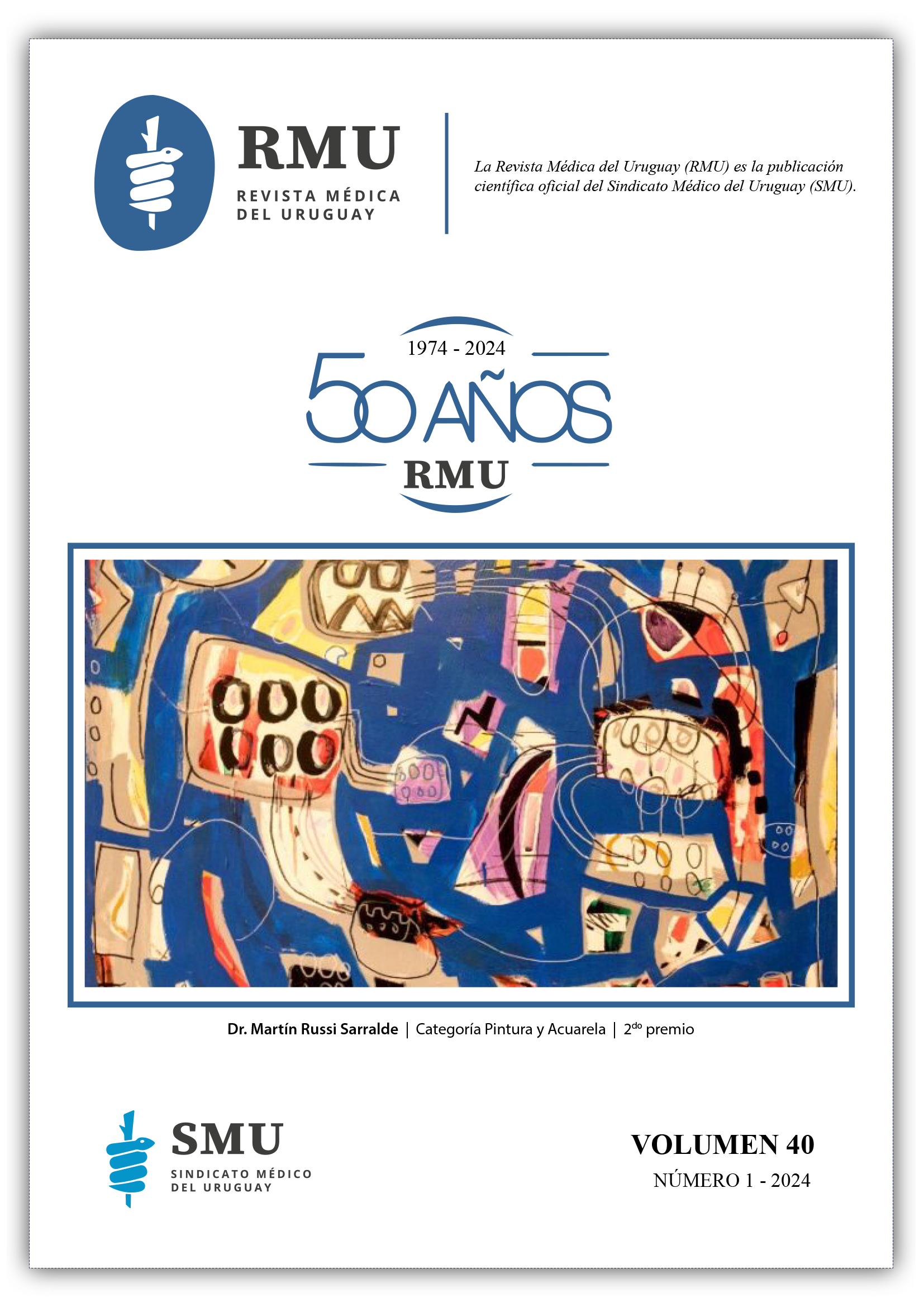Work-related asthma
A case report
DOI:
https://doi.org/10.29193/RMU.40.1.8Keywords:
OCCUPATIONAL ASTHMA, LABOR EXPOSURE, ORGANIC POWDERSAbstract
We present the case of a 31-year-old worker who has been working in a grain mill for 12 years and has developed work-related asthma.
The objective of this article is to present the foundations used to support the occupational origin of the acquired asthma. The study describe the work tasks performed, the materials used, and the working methods. The work-related exposure to organic dust and its temporal relationship with respiratory symptoms is particularly analyzed. This information allows us to understand the importance of working conditions and exposure to organic dust, a risk factor, for the development of this work-related respiratory pathology. Measurements of maximum expiratory lung volume were made using the peak flow technique during and outside of the workday. Expiratory flow variations greater than 20% were observed, both during and outside of the workday, which followed a similar symptomatic pattern as reported by the worker.
The study concluded that there is evidence of a causal link between asthma and work, thus suggesting the diagnosis of work-related asthma.
The importance of assessing occupational risks in each activity to implement health surveillance plans for both workers and the work environment is highlighted, aiming to prevent the onset and progression of this and other pathologies that often result in work incapacity and deterioration of workers’ quality of life.
References
Ramazzini B. Pistores molitores frugum (Panaderos, molineros de grano). En: Ramazzini B. De morbis Artificum Diatriba (Tratado sobre las enfermedades de los trabajadores). Cap. XXI:133-9 (Traducción comentada de la obra original publicada en el Siglo XVIII). Disponible en: https://www.insst.es/documents/94886/96076/Tratado+sobre+enfermedades.pdf/96afb914-beca-4e48-87d4-ec91d1805311?t=1522834990000 (Consulta: 12 abril 2023).
O’Farrill-Romanillos P, Ávila-Lara A, Álvarez-Chávez F, Tinajero JC, Nayeli Torres A, Maldonado-Domínguez E. Asma ocupacional. Serie de casos. Rev Alerg Méx 2020; 67(3):286-92. doi: 10.29262/ram.v67i3.794.
Uruguay. Banco de Seguros del Estado. Monitor de accidentes y enfermedades profesionales. Disponible en: https://institucional.bse.com.uy/inicio/servicios/monitor-accidentes-del/monitor-enfermedades-profesionales/informes-anuales-enfermedades/ (Consulta: 12 abril 2023).
Martínez González C. Asma ocupacional. En: Martínez González C, ed. Manual de neumología ocupacional. Madrid: Ergón, 2007:149-68.
Cebollero P, Echegoyen E, Santolaria MA. Asma ocupacional. Anales Sis San Navarra 2005; 28(Supl1):51-63. Disponible en: https://scielo.isciii.es/scielo.php?script=sci_arttext&pid=S1137-66272005000200008&lng=es (Consulta: 12 abril 2023).
Miquel-Gomara Perelló J, Román Rodríguez M. Medidor de Peak-flow: técnica de manejo y utilidad en Atención Primaria. Medifam 2002; 12(3):6-91. Disponible en: http://scielo.isciii.es/scielo.php?script=sci_arttext&pid=S1131-57682002000300006&lng=en&nrm=iso&tlng=en (Consulta: 12 abril 2023).
España. Ministerio de Trabajo y Asuntos Sociales. Instituto Nacional de Seguridad e Higiene en el trabajo. NTP 327: Asma ocupacional: criterios diagnósticos actuales. Disponible en: https://www.insst.es/documents/94886/326853/ntp_327.pdf/2e01c3e6-1339-4e66-a777-7036ce0fa0cd?version=1.0&t=1614698465982 (Consulta: 12 abril 2023).
Argentina. Ministerio de Trabajo, Empleo y Seguridad Social de la Nación. Superintendencia de Riesgos del Trabajo. Guía de actuación y diagnóstico de enfermedades profesionales. Asma laboral. 2018. Disponible en: https://www.argentina.gob.ar/sites/default/files/guia_de_actuacion_y_diagnostico_-_asma_laboral_0.pdf (Consulta: 12 abril 2023).
Borghello MC, Dumé N. Asma ocupacional Arch Alerg Inmunol Clín 2016; 47(1):14-37. doi: 10.53108/AAIC/20161/0014-0037.













